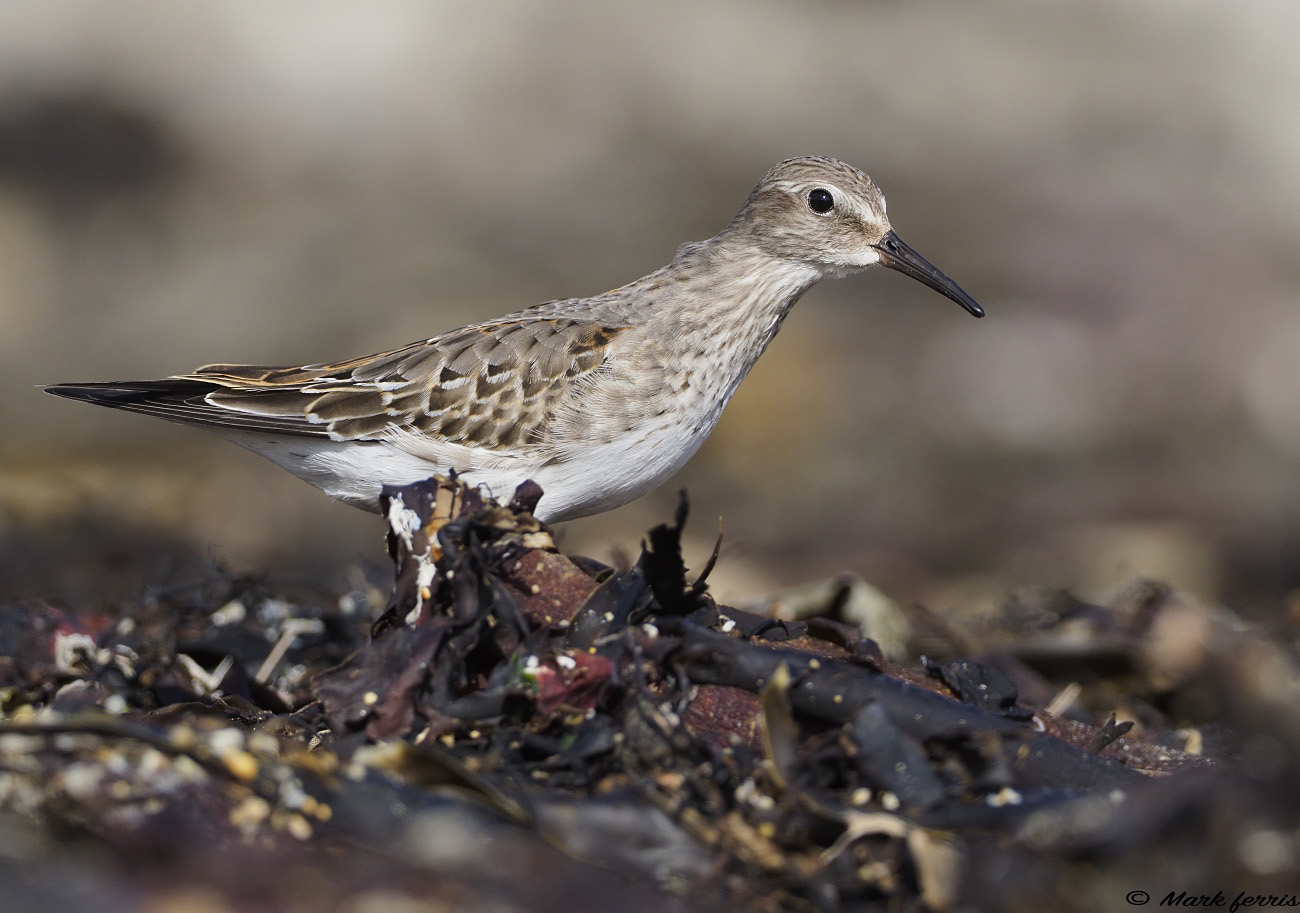

The white patch on the rump can be seen while the bird is in flight making it a useful identification tool. The two primary features used to identify this bird in the field are its long wings and its white rump.

The underparts are white, as is the supercilium while the crown is a brownish color and the face is pale. The breast is finely streaked and there is a white “V” on its back. These black-based feathers have brown edges towards the scapulars and whiter edges towards the wing coverts. Juvenile plumage consists of black-based feathers on the back and wing coverts. Finally, The supercilium is white while the crown and eyeline are darker. The underparts are still white but the breast is now a dark grey. In the adult basic plumage the underparts are a dark grey and at the centers there are black feathers. The breasts and flanks are streaked and finally the underparts are white. The supercilium is pale, there are black feathers on the back and there are grey edges on the wing coverts. For the adult alternate plumage the crown and face have a brownish tinge. Their plumage is much less distinct during the winter however, during all seasons males and females remain similar in their appearance. This bird is often mistaken with many similar looking sandpipers that live in its range or along its migration path. Its beak is of medium length and its legs are very dark. The top of its body is a dull grey-brown color and it has a white eye stripe. The white-rumped Sandpiper is a relatively small bird measuring only 7.8 inches. And finally its species is classified as calidris fusicollis which is more commonly known as the white-rumped sandpiper. Its family Scolopacidae encompasses all sandpipers and being a stint classifies it in the genus Calidris. Being a shore bird places it in the order Charadriiformes along with gulls, alcids, plovers and oystercatchers. Hybrids between this species and the dunlin are occasionally found in northeastern North America (see external link below) the white-rumped sandpiper is also suspected to hybridize with the buff-breasted sandpiper.įirstly, the white-rumped sandpiper is placed in class Aves which is consistent for all birds. They mainly eat insects, mollusks and marine worms, also some plant material. These birds forage by probing on mudflats or tundra or picking up food by sight in shallow water. Therefore, the majority of sightings occur during the spring or fall in temperate regions and are generally in small numbers around water. Similarly, in the winter they are rarely seen because they travel too for south for many birdwatchers. In the summer they are rarely seen because they are in such an obscure breeding location. The species is a rare vagrant to Australia. They are rare but regular vagrants to western Europe. They are a long distance migrant, wintering in southern South America. They nest on the ground, usually well-concealed in vegetation. Their breeding habitat is the northern tundra on Arctic islands in Canada and Alaska. Only the Baird's sandpiper also shows this, and that bird can be distinguished by the lack of a white rump. One of the best identification features is the long wings, which extend beyond the tail when the bird is on the ground. This bird can be difficult to distinguish from other similar tiny shorebirds these are known collectively as "peeps" or " stints". In winter plumage, this species is pale gray above. They have a white stripe over their eyes. The body is dark brown on top and mainly white underneath, with brown streaks on the breast and a white rump. Īdults have black legs and a small, thin, dark bill.

It is classified as monotypic species meaning that no population differentiation has been described. The white-rumped sandpiper ( Calidris fuscicollis) is a small shorebird.


 0 kommentar(er)
0 kommentar(er)
